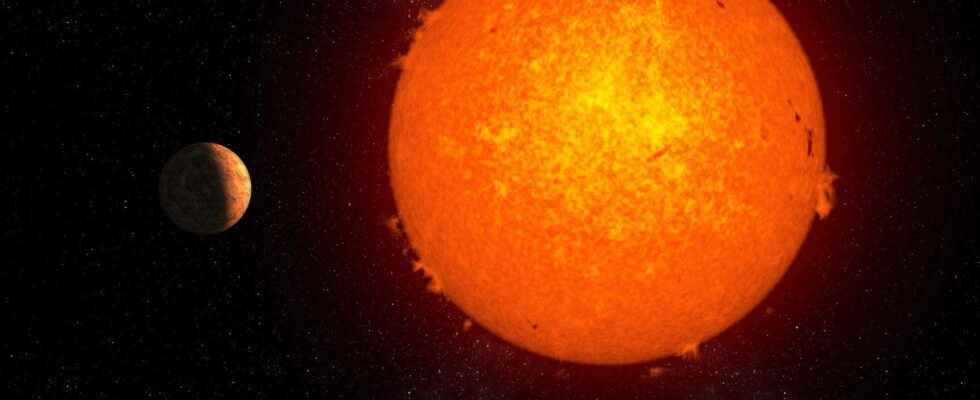An exoplanet half as massive as Earth, but denser and much warmer, has been discovered around a nearby red dwarf. This object, of an unusual type among those discovered to date, will help to better understand the origin of these planets.
You will also be interested
[EN VIDÉO] Interview: what is an exoplanet? The question of exoplanets is very old in astronomy. Their existence is for the first time indirectly attested in the 1990s. Futura-Sciences met Jean-Pierre Luminet, renowned astrophysicist, to speak to us in more detail about this fascinating subject.
More than 4,500 exoplanets are known to date, discovered in more than 3,500 planetary systems. However, of these, less than 200 have dimensions (size or mass) lower than those of Earth. Those small planets, althougha priori many, remain in fact difficult to find.
In a new study published in Science, an international group of 78 researchers, led by Kristine WF Lam and Szilárd Csizmadia of thePlanetary Research Institute of the German Center for Aeronautics and Astronautics (DLR), adds a new member to this category : GJ 367b.
A nearby underground …
This planet, located just under 31 light years of the Earth, was discovered thanks to the detection of its transits speak Transiting Exoplanet Survey Satellite (Tess). The satellite measurements of the Nasa allowed to determine its diameter: 72% of that of the Earth (12,742 km), or just over 9,000 kilometers. ” This places it among the terrestrial planets of size smaller than Earth and advance the search for a “second Earth” », Explains Kristine Lam. To compare, Venus has an average diameter of 12,104 kilometers and Mars of 6,779 kilometers.
His star, the red dwarf GJ 367, about half the size of the Sun, was then studied from the ground using the radial velocity method. The mass of the planet was determined using the spectrograph Harps, installed on the telescope of 3.6 meters from the European Southern Observatory, and evaluated at 55% of the mass of the Earth. Venus and Mars, for their part, have masses equal to 81.5% and 10.7% of that of the Earth. This result makes GJ 367 b one of the lightest planets known to date and places it in the category of sub-Earth, that is to say planets significantly less massive than Earth and Venus.
… or rather an overheated super-Mercury
By determining its radius and mass with an accuracy of 7 and 14% respectively, the researchers were able to deduce that this planet is rocky. Its average density, equal to almost one and a half times that of the Earth, ” indicates that the planet is dominated by a nucleus of iron. These properties are similar to those of Mercury, with its core of iron and nickel disproportionate which differentiates it from other telluric bodies of the solar system », Specifies Szilárd Csizmadia.
However, the planet’s proximity to its star means it is exposed to an extremely high level of radiation, more than 500 times stronger than what Earth is experiencing. Indeed, this planet takes only about eight hours to circle its mother star. The temperature on its surface could thus reach up to 1,500 degrees Celsius, what to do melt rocks on the planet. GJ 367 b therefore clearly cannot be regarded as a ” second Earth “.
GJ 367 b belongs to the group of exoplanets with ultra-short revolution period, which orbit their star in less than 24 hours. ” We already know a few, but their origins are currently unknown., says Kristine Lam. By measuring the precise fundamental properties of [cette] planet, we can gain insight into the history of the formation and evolution of the system “.
What you must remember
- GJ 367 b, an exoplanet half the size of Earth, but denser and much warmer, has been discovered around a red dwarf 31 light years away from us.
- The proximity of this planetary system makes it ideal for further investigation.
- The discovery demonstrates that it is possible to accurately determine the properties of the smallest and least massive exoplanets.
- Such studies provide a key to understanding how the terrestrial planets form and evolve.
Interested in what you just read?
.
fs3
